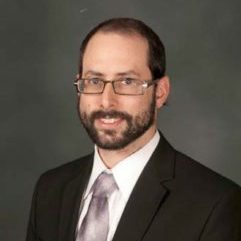Kohanim were held to a very high standard. They must be physically and spiritually perfect. For all intents and purposes, they represented G-d to the Jewish people and the world. When people needed to come close to G-d, to pray to G-d or to bring an offering to G-d – they would come to Beis Hamikdosh and to the Kohein.
If a man sinned and needed to repent; he would come to the Kohein.
Consider the flipside: in order to fulfill his job properly, the Kohein needed to spend the bulk of his days with sinners. Who else hung around the Bais Hamikdosh?
How did the Kohein maintain his holiness? Remember that much of the Kohein’s day was spent with sinners, people who had done sins like adultery, lying under oath and worse. How did he keep himself as a light unto his fellow Jews?
I believe that the answer is that the Kohein’s day was split into two parts. During the day he would inspire and teach. He would be an emblem of holiness. But at night he would retire to his chambers and look at no one but himself. When the Kohein ate his special personal portion of Terumah at night he needed to be totally pure. Of course, the Kohein could eat Terumah whenever he wanted, but if he had become impure during the day, he needed to immerse himself in daylight and wait for nightfall before partaking in his feast.
It was only through the Kohein’s personal growth and purity at night that he was able to radiate purity and holiness during the day.
The Mishna tells us: “When can we begin saying Shema at night? From the time that the Kohein can begin eating his Terumah.”
The commentaries explain that we say Shema twice. During the day we announce it to the world: “The Lord is our God, the Lord is one”. At night we announce it to ourselves.
We have a mission to teach the world about G-d. This is impossible if we do not constantly reinforce this message to ourselves.
The Avos D’rav Nosson records that Aharon the Kohein had an interesting method of rebuke: If he saw somebody sinning, he would become friends with them. The ‘sinner’ would think “if Aharon knew what kind of a sinner I was he wouldn’t associate with me – I better shape up” It wasn’t what Aharon said; it was who he was.
 The Mosaica Haggadah by Rabbi Sender Haber
The Mosaica Haggadah by Rabbi Sender Haber
Unique features include: Real questions and insightful comments geared toward bright young students, Fascinating and meaningful short explanations by a world-class educator, Yocheved Nadell’s delightful contemporary illustrations and Laminated pages to allow for easy use at the Seder table for many years
Order online at https://mosaicapress.com/product/mosaica-haggadah/ or directly from the author. Bulk rates are available.

0 Comments